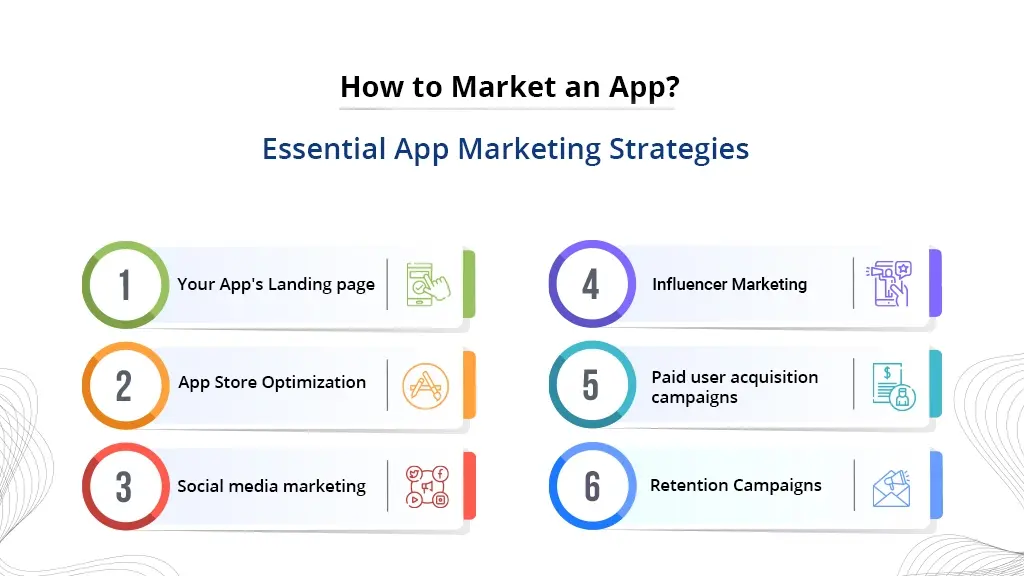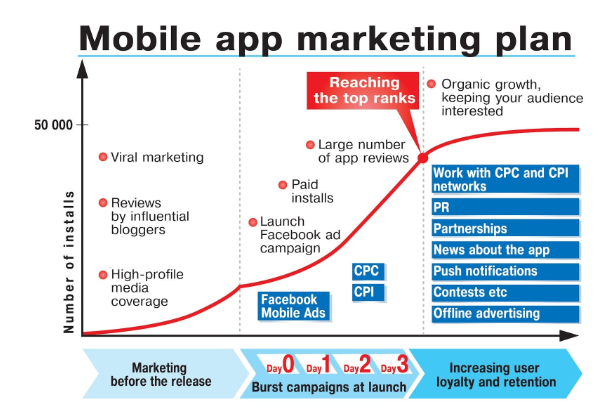Launching a mobile app is just the beginning of the journey; the real challenge lies in getting users to download, engage, and remain loyal to your app. A well-defined marketing strategy is essential for mobile app owners to ensure sustained growth and maximize their app's potential. Here’s a comprehensive guide to effective strategies for marketing your app successfully.
1. Define Your Target Audience
Before you begin promoting your app, it's important to identify who your ideal users are. Understanding your audience’s demographics, interests, behaviors, and pain points will shape your marketing approach and messaging.
Tip: Create detailed user personas to represent different segments of your audience. This helps you tailor marketing messages to each group, increasing the likelihood of resonating with them.
2. Optimize Your App Store Listing (ASO)
App Store Optimization (ASO) is similar to SEO for websites—it’s all about making your app easy to find in the app stores. Optimize your app's title, description, keywords, and visuals (icon, screenshots, and preview video) to increase its visibility in search results.
Key ASO Tips:
- Choose a clear, memorable app title that includes relevant keywords.
- Write a description that highlights key features and benefits.
- Use high-quality visuals that showcase the app experience.
3. Leverage Social Media for Engagement
Social media is a powerful tool for reaching and engaging potential app users. Focus on the platforms where your target audience spends most of their time, whether that’s Instagram, Twitter, Facebook, LinkedIn, or TikTok.
Ideas for Social Media:
- Share user testimonials and case studies.
- Run contests or giveaways to increase awareness.
- Post engaging content such as tutorials, tips, and app usage ideas.
4. Influencer Marketing
Collaborating with influencers who align with your brand can increase your app's visibility. Influencers can provide authentic recommendations to their followers, generating interest and downloads.
Influencer Strategy:
- Look for influencers in your niche who have a genuine connection with their audience.
- Consider micro-influencers with smaller but highly engaged followings.
- Provide influencers with an exclusive offer, free access, or early app features to create excitement.
5. Utilize Content Marketing and SEO
Create valuable content around topics related to your app to drive organic traffic. Blogs, videos, and social media posts that highlight your app's benefits, features, and industry insights can increase brand awareness and establish your authority.
Content Ideas:
- Write blogs on how your app solves specific problems.
- Create tutorials, demo videos, or explainer graphics.
- Invest in SEO to ensure your content ranks on search engines for relevant keywords.
6. In-App Engagement and Push Notifications
Keeping users engaged after they download the app is essential for retention. Utilize push notifications, in-app messages, and updates to keep users coming back. However, be mindful of the frequency and relevance of these notifications to avoid user fatigue.
Best Practices for Push Notifications:
- Personalize messages based on user activity or preferences.
- Offer exclusive deals, reminders, or tips to add value.
- Avoid excessive notifications to reduce the risk of app uninstalls.
7. Offer Referral Rewards
Encourage your users to invite their friends by implementing a referral program. Reward both the referrer and the new user with discounts, credits, or exclusive access to features.
Referral Program Tips:
- Make the referral process easy to use and accessible within the app.
- Offer appealing rewards that resonate with your target audience.
- Track referral metrics to understand which incentives work best.
8. Paid Advertising
Consider using paid advertising to reach a larger audience quickly. Platforms like Google Ads, Facebook Ads, and TikTok Ads allow you to target specific demographics and interests to drive app installs and engagement.
Paid Advertising Channels:
- App Store Ads: Target users directly within the app store.
- Social Media Ads: Reach users on platforms where they already engage with similar content.
- Google Ads: Drive traffic through search ads or display ads on relevant sites.
9. Implement App Analytics and Monitor KPIs
Use analytics to monitor key performance indicators (KPIs) like download rates, active users, session time, and retention rates. Tracking these metrics gives insight into what’s working and where adjustments are needed.
Essential KPIs:
- Cost per Install (CPI): The cost of acquiring each new user.
- Retention Rate: The percentage of users who continue using the app over time.
- Lifetime Value (LTV): The revenue generated by a user throughout their relationship with the app.
10. Create a Customer Support Strategy
Customer satisfaction plays a vital role in retention. Provide a seamless support experience to handle queries, technical issues, and feedback. The better the experience, the more likely users will stay and recommend your app to others.
Support Tips:
- Offer support within the app via chat, FAQs, or ticketing systems.
- Actively respond to app store reviews and feedback.
- Use feedback to improve features and address issues that impact user experience.

Conclusion: A Holistic Approach to Marketing Success
Developing a marketing strategy that targets potential users while keeping existing users engaged is crucial for mobile app success. From optimizing app store listings to nurturing relationships through social media and influencer partnerships, these strategies are designed to boost awareness, drive installs, and keep users coming back.
Remember, app success is a journey, not a one-time event. Consistently track your results, adjust your approach based on data, and focus on delivering value to your users. By combining these efforts, you can build a thriving app that stands out in today’s competitive landscape.
